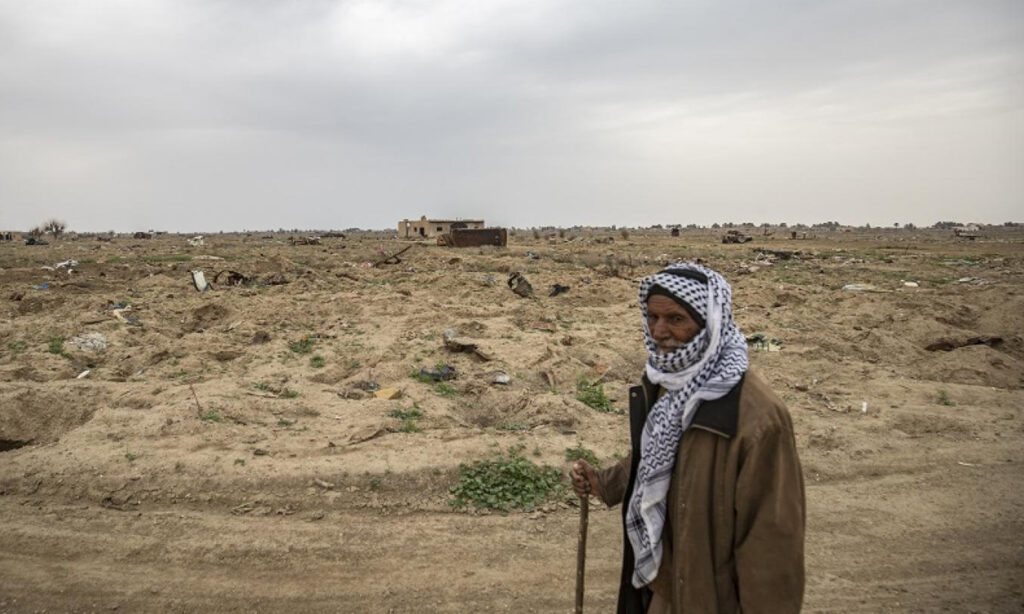Enab Baladi – Deir Ezzor
“What saddens us the most is the sight of the destruction that affected most of the houses in our town,” said Abdul Jabbar al-Khaled, 37, when describing the situation of the majority of the residents of al-Baghouz in the eastern countryside of al-Bukamal, near the Syrian-Iraqi border, three years after the end of the battles in the town.
The young man in his thirties was referring to destroyed buildings, most of which had not been restored in the town, which was the last stronghold of the Islamic State (IS). The town witnessed violent battles waged by the fighters of the Syrian Democratic Forces (SDF) against members of the organization, who made the town their last fortress in early 2019.
After the battle, neglect
On 23 March 2019, SDF announced its control of al-Baghouz, six months after it announced the launch of a battle against the IS group to control its last strongholds while being backed by the International Coalition Forces (ICF).
Since then, however, there have been no manifestations of reconstruction in the town or the removal of the destruction caused by battles, except for restoring and repairing some of the main roads and reopening the local and municipal councils, the health center, and the water station, in addition to some schools that were also restored.
When contacted by Enab Baladi, some of the al-Baghouz residents said that most of the destroyed buildings remained as they were when the battles ended and that what was restored was at the expense of the owners of those private buildings. No one has compensated those affected or contributed to reconstruction.
Fears of IS
In an interview with Enab Baladi, an official of the local council in al-Baghouz deemed what happened to the town “total destruction,” due to which most of the houses were turned into hills of rubble, while most of the residents were displaced from the town due to battles.
The local council official, who declined to be named because he is not authorized to speak to the media, said that reconstructing the town, or at least removing signs of destruction and rubble, requires a diligent action plan and millions of dollars that the local authorities are currently unable to secure.
Since the beginning of the current year, there has been a high likelihood of a resurgence of IS activity in the eastern Euphrates region. IS sleeper cells have increased their activity with the coronavirus (Covid-19) pandemic, taking advantage of a world preoccupied with the said pandemic. Therefore, the town has not seen any significant SDF interest in rehabilitating the residential areas in it, according to the local council official.
Useless meetings
The sheikhs and dignitaries of the region’s clans make constant visits to the al-Omar oil field base, where SDF and International Coalition leaders are stationed. During these visits, meetings are held on the need to improve the overall situation in al-Baghouz and the countryside of Deir Ezzor.
Abdel-Fattah al-Muqrin, a civil activist from the eastern countryside of Deir Ezzor, said that most of what SDF and the International Coalition provided was nothing but promises, and all the meetings that were held remained without effect and did not fulfill the hopes placed on them.
As stated by the civil activist in his interview with Enab Baladi, residents were forced to use some of the town’s houses and turn them into schools for children after schools destroyed by hostilities and bombing could not be restored.
The effects of recent battles in al-Baghouz between SDF and IS fighters remain visible, including the so-called al-Baghouz camp and several mass graves, most of which still contain bodies.

